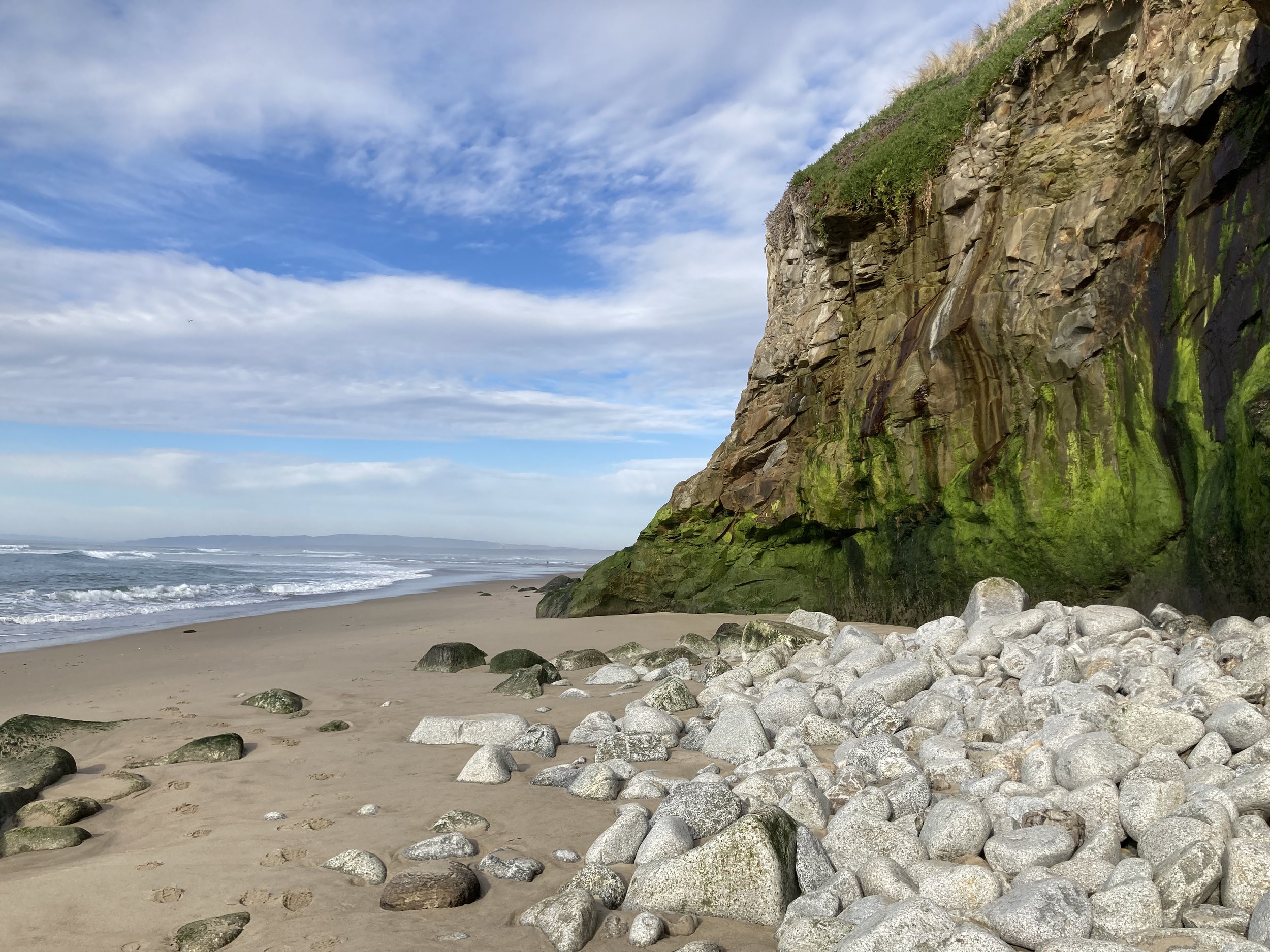Surf Beach, a beautifully untamed stretch of coastline, is our local beach and possesses a rather unique history. From race track, to train station, to city, and back to undeveloped sand dunes, it is home to many shore birds, including the Western Snowy Plover. The impact this small seemingly insignificant bird has had on Surf Beach is almost as great as the train station that is again in existence above the dunes today.
A modest, tiny shore bird, The Western Snowy Plover is approximately six inches in length with grey, brown upper plumage and white under plumage. It primarily forages for small invertebrates in wet or dry beach-sand and among tide-cast kelp. The birds nest in the dunes with a breeding season March through September and nests typically host three small eggs. The parents share in the incubation duties but unlike many other birds, within hours of the eggs hatching, the small fledglings will leave the nest in search of food.
In 1993 this unassuming, small bird was listed as threatened under the Endangered Species Act and has since become the fulcrum point for Surf Beach visitation seven months of the year. As Surf Beach is on Federal property, strict interpretation and enforcement of the Endangered Species Act has been observed. During the nesting season of March 1st to September 30th each year, only a 1/2 mile of the coastline at Surf Beach is open to the public. No fishing, kite flying, dogs, bonfires or camping are allowed on the beach and the dunes are off limits during this time period as well. The number of violations allowed each season before the beach is closed completely to the public is limited to 50 and can be as vague as a set of footprints in the off limit areas. Thankfully beach closures and limitations are just one aspect of Vandenberg AFB’s management program for the recovery of this species. Others include predator management and habitat restoration through the removal of nonnative plant species.
With all this focus on the recovery program at Surf Beach some are surprised to find the Western Snowy Plover’s habitat extends along the West Coast from Washington through Baja Mexico and beyond. Indeed, many contend the bird is not truly threatened and cite reliable sources, information and data. An appeal has been submitted to USF&WS to delist the bird but to date no response has been received. It is not, however, our position at this time to debate the fairness or accuracy of the listing or the measurements taken by VAFB mandated through the ESA. Rather, we are asking everyone to observe the rules in place and help keep our beach open all year so that we may enjoy the beauty of this untamed area in its natural glory.
Currently, after just a little over seven weeks, violations are listed at 15 of the 50 allowed for the season. If they continue at this rate complete access to Surf Beach will be lost again prior to the end of the nesting season.
Truly, whether you believe the bird is threatened or whether you agree with the restrictions, we strongly believe we should always strive to be better stewards of our incredible planet and work to live side by side with nature everyday, not just seven months of the year.

